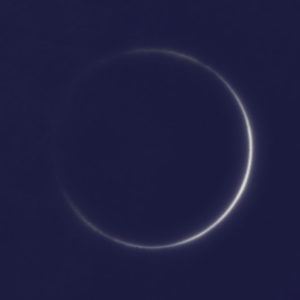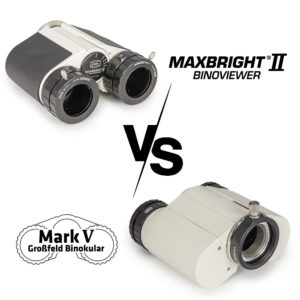Baader Planetarium Blog Posts
-
Comet NEOWISE - now visible!
This entry was posted on July 6, 2020 Last modified on February 28, 2024.
Update 09.07.2020: See the new Comet-Gallery with lots of images and videos UPDATE: The latest images fo comet NEOWISE During the night of 7-8 July, the whole of Central Europe had the special opportunity to see two rare celestial phenomena simultaneously. Around 3 o'clock comet NEOWISE climbed over the horizon. Not much later, the sky behind the dark cloud bank just below the comet suddenly became much brighter. As it turned out, the sun began to illuminate noctilucent clouds at a height of 80km (four times as high as normal clouds), which consist of frozen meteor dust. These rare clouds became more and more dominant and finally covered the comet until it was hardly visible around 4 o'clock. NEOWISE with NLC over Mammendorf:...
-
Turnkey Telescope Installation for "Staernwarte Gersbach"
This entry was posted on June 16, 2020 Last modified on February 19, 2024.
Die Fakten Institute Student research centre phaenovum Electronics Baader Observatory Management System Telescope(s) PlaneWave CDK 17 with TEC APO 140 ED Mount(s) 10Micron GM 3000 HPS on Baader Heavy Steel Pillar Accessories DADOS Spectrograph, 8" double mounting plate, Whitelight- and H-alpha filters as well as various other optical and mechanical parts Activity Visual observation, Deep-Sky imaging, Astrometry, spectroscopy Build in Year 2020 Website www.phaenovum.de It's all about the right combination. With the help of various parts from our standard products, we have assembled the following combination of devices for the staernwarte (observatory) Gersbach in order to create a device with multifunctional use on the most solid and stable basis. From spectroscopy, astrophotography and astrometry of various satellite tracking applications up to solar observation, planetary videography and...
-
The Atmosphere of Venus - Photographed by our Customers
This entry was posted on June 5, 2020 Last modified on February 28, 2024.
Venus as a ring – how can that be? During the last days several customers have sent us some very interesting photos of Venus, which we do not want to withhold from you. They show the planet as a very narrow sickle or even as a ring. This effect can only be seen on Venus by observers on Earth, and it is only visible when Venus is in lower conjunction (www.wikipedia.org/Aspects_of_Venus), i.e. when Venus is located between the Sun and the Earth.. How does the effect come about? The planets Venus and Mercury are the only two so-called "inner planets": They are closer to the Sun than the Earth and orbit the Sun within the Earth's orbit. That‘s why they are the only planets that...
-
1st Light with the QHY600 EB: a first field report
This entry was posted on June 2, 2020 Last modified on February 26, 2024.
Darkness Became Light! ... A Quantum Leap in 36 x 24mm at 61.1MP? In recent years, color cameras have become increasingly popular. A reversal of the trend is not to be expected. One reason for this is the ability to capture weak structures in deep-sky objects even with moderate exposure times. Developments in CMOS sensors and recently the BSI sensor technology have played a decisive role in this. In addition, both quantum efficiency (QE) and full-well capacity increased, noise was reduced, pixels became smaller and smaller, and dynamics increased with almost every new sensor generation. What happens when all these developments see the light of the stars in a new camera like the QHY 600M with a black and white sensor? I had asked myself...
-
4,2m Highspeed Dome for NASA at McDonald Observatory, Texas
This entry was posted on May 26, 2020 Last modified on February 19, 2024.
Please note: We wrote the following report of our dome assembly in January of this year months ago, but had to wait for picture release from NASA and the University of Texas, which was delayed for understandable reasons given the current situation. Located in the Texas Davis Mountains on Mount Locke at 2,100m is the famous McDonald-Observatory. The University of Texas owns and finances the site. Due to the current construction of SLR stations at NASA for Space Geodesy Satellite Laser Ranging (SGSLR), a 4.2m high-speed dome from Baader Planetarium was installed here in January 2020. This is the second system of its type after the 4.2m Highspeed-Dome at the Goddard Space Flight Center, which was installed in April 2019. For over 40 years, NASA's global network...
-
Field test of MaxBright® II Binoviewer by William A. Paolini
This entry was posted on May 14, 2020 Last modified on February 26, 2024.
William "Bill" Paolini has been actively involved in optics and amateur astronomy for more than 50 years, and is author of the popular book: : Choosing and Using Astronomical Eyepieces We appreciate the positive feedback we have received so far. The Baader MaxBright® II Binocular with case (#2456460, € 425,-) incorporates the knowledge aquired during thirty years of building astronomical binoviewers. It closes the gap between cheaper entry-level binoviewers and our high-end Mark V Giant Bino – see also the article about the differences between MaxBright® II and Mark V Großfeld (Giant) binocular. A detailed test report: Field Test of the Baader MaxBright® II Binoviewer has now been published by William Paolini in the most popular astro forums. We are very happy about his extremely...
-
New Technology in the QHY600 und QHY 268C CMOS Cameras
This entry was posted on May 25, 2020 Last modified on February 19, 2024.
QHY600 is a 60 mega Pixel full frame CMOS camera.This sensor is available in both monochrome and color versions The QHY600 PH, QHY600 PRO and QHY600 PH-L (ite) models are immediately available for pre-order. More details about the QHY600 camera can be found here The next-generation of high-speed data transmission technology USB Re-connection with 12V ON/OFF Extended Full Well and Multiple Read Modes Random thermal noise suppression 2 x 10 Gb optical fiber transmission (QHY600 PRO) 1GB / 2GB oversized DDR3 memory Large programmable FPGA (EB and PRO), only for QHY600 PRO Special versions of the QHY 600 models: Optional available with additional water cooling (PRO models only) Version with short back focus (BFL) available for all QHY 600 models New Technology Found in...
-
Comparing the IMX455 (Industry-Grade) and KAI-11002 35mm Format Monochrome Sensors
This entry was posted on May 25, 2020 Last modified on February 27, 2024.
A technical comparison between the two monochrome 35mm full format sensors CCD Kodak KAI 11002 and Sony CMOS IMX 455 (Industry-Grade) - CCD versus CMOS Why is a monochrome full frame sensor so popular in astrophotography? For many years before electronic imaging became commonplace, the standard method of taking astro-photos by amateurs was to use a 35mm film camera. A single 35mm film frame measures 24mm x 36mm with a diagonal of about 43mm. Early SCT telescopes produced a useable image circle slightly smaller than the 35mm frame, so images were typically cropped but the wide range of types and availability of 35mm film made this size a "standard" for amateurs. With the advent of electronic imaging, affordable CCD sensors for amateurs were initially much...
-
QHY HISTORY
This entry was posted on April 27, 2020 Last modified on February 26, 2024.
QHYCCD Cameras – Discover New Horizons From childhood Dr. Qiu Hongyun held a keen interest in nature, science and technology. As a young boy he would go to the chemical factory where his father worked and do chemistry experiments in the lab. He also enjoyed tinkering with electronics and made small board projects and a radio. In the 5th grade he read in a Science magazine about the approach of a comet. He tried to see the comet and although the toy binoculars he was able to find failed to be useful in spotting the comet, the effort and excitement of the event generated an interest in astronomy and that interest led to his making a small refractor telescope and later to attempt astrophotography with...
-
Differences between MaxBright II and Mark V Großfeld (Giant) Binocular
This entry was posted on April 24, 2020 Last modified on February 26, 2024.
In our Forum post on the german website www.astronomie.de a question was asked about the difference between the Baader MaxBright® II Binoviewer incl. case (#2456460, € 425,-) and the Mark V Großfeld (Giant)-Binocular (#2456410 , € 1425,-) . We have provided a detailed answer to this question, which we do not want to withhold from all other customers who do not have an account in the Astronomie.de forum. Many experiences have been incorporated into the development of the MaxBright® II Binoviewer, so that the differences are surprisingly small. The Mark V Großfeld (Giant) Binocular is produced strictly according to Zeiss specifications by the same suppliers exclusively in Germany who had already supplied Carl Zeiss Jena. For the MaxBright® II, design, development, final assembly and quality control have been and...















